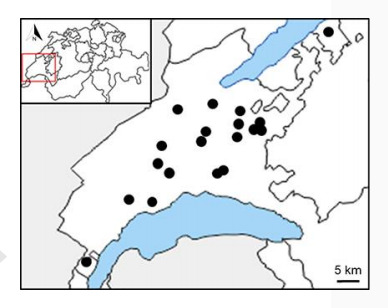The Continental Region is represented by the arc north of Lake Geneva in the Romandy region in western Switzerland. In contrast to other pilot region, this region is characterized by low animal production, and arable cropping is predominant. Arable crops and grass cuttings are mostly exported as feed to more animal-dense areas of Switzerland. With low animal stocks, nutrients have to be imported as manure or fertilizer. As nutrient imports can be expensive, the nutrient exports are expected to exceed the nutrient imports, resulting in nutrient deficits and imbalanced nutrient supply.
NutriBudget is collaborating with both conventional and organic farms in the pilot region, and both farming systems will be included in the study. In organic farming, nutrient imports are further restricted in amount and origin. Therefore, the nutrient imbalances are expected to be more profound on organic farming compared to conventional farms.
As part of the NutriBudget project, the pilot aims to optimize nutrient use through a detailed analysis of the current state in the first year and field experiments as well as modelling based on these results in the following 2 years. The mitigation measures may include:
More information: Research Institute of Organic Agriculture (FIBL) – Contact person: Else Bünemann, else.buenemann@fibl.org
